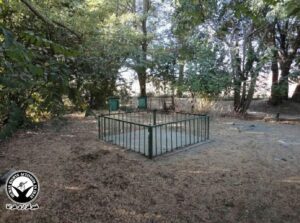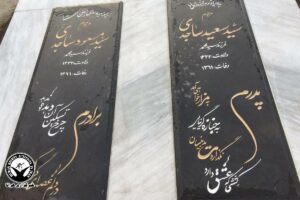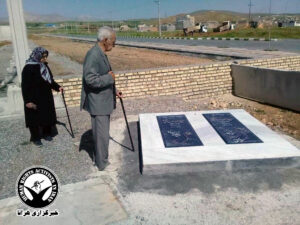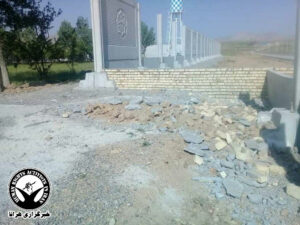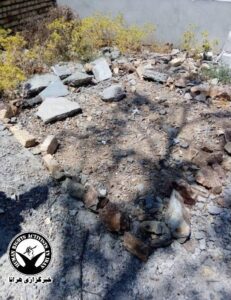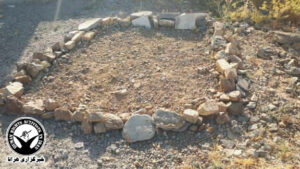HRANA News Agency – The graves of Seyed Masoud (Nabi) Sajedi and Seyed Saeed (Hadi) Sajedi, two victims of the massacre of political prisoners in the 1980s, that were in their father’s private garden located in Azna of the Lorestan province, were demolished. The families of these victims were barred from placing headstones all these years, despite burying their children on their private property. Decades later, the Sajedi family recently had laid headstones, but after a while, the Azna city intelligence office demanded that the headstones must be removed. Eventually, the graves of the two victims were destroyed without informing their families.
According to the report of Human Rights Activists News Agency (HRANA), the headstone of Seyed Masoud Sajedi and Seyed Saeed Sajedi in their father’s private property located in Azna of the Lorestan province was demolished.
Masoud Sajedi was arrested in 1981 and about a year later was Executed by a firing squad. Saeed Sajedi, Twin Brother of Masoud, was also arrested by the security forces the next day and was taken to Khorramabad Hospital 17 days later due to severe torture and a ruptured spleen, and eventually died of internal bleeding.
After several decades, the Sajedi family recently attempted to place a headstone, but after some time, the city intelligence office contacted them and demanded that the headstone must be removed, the Sajedi brothers’ relatives did not comply. Eventually, in August of this year, the Sajedi family became aware that their children’s graves were destroyed at night.
Seyed Masoud (Nabi) Sajedi, born in 1954, was a teacher and not married, and Seyed Saeed (Hadi) Sajedi, also born in 1954, was a teacher, married, and had two children.
The mass executions of political prisoners in the 1980s are an undeniable yet at the same time bitter reality of Iran’s contemporary history and a long-standing wound on the body of civil society. These mass executions were carried out throughout the country between 1981 and 1988, and its victims were buried in various forms and regions.
In addition to the fact that the burial sites of many were never identified, in some places the bodies of executed people were inevitably buried by their families in private homes due to the fact that victims were not allowed to be buried in public cemeteries.
As this report shows, burials on private property and the passage of time, decades after burial, have not prevented these sites from being destroyed or insulted by security agencies or their affiliates.




